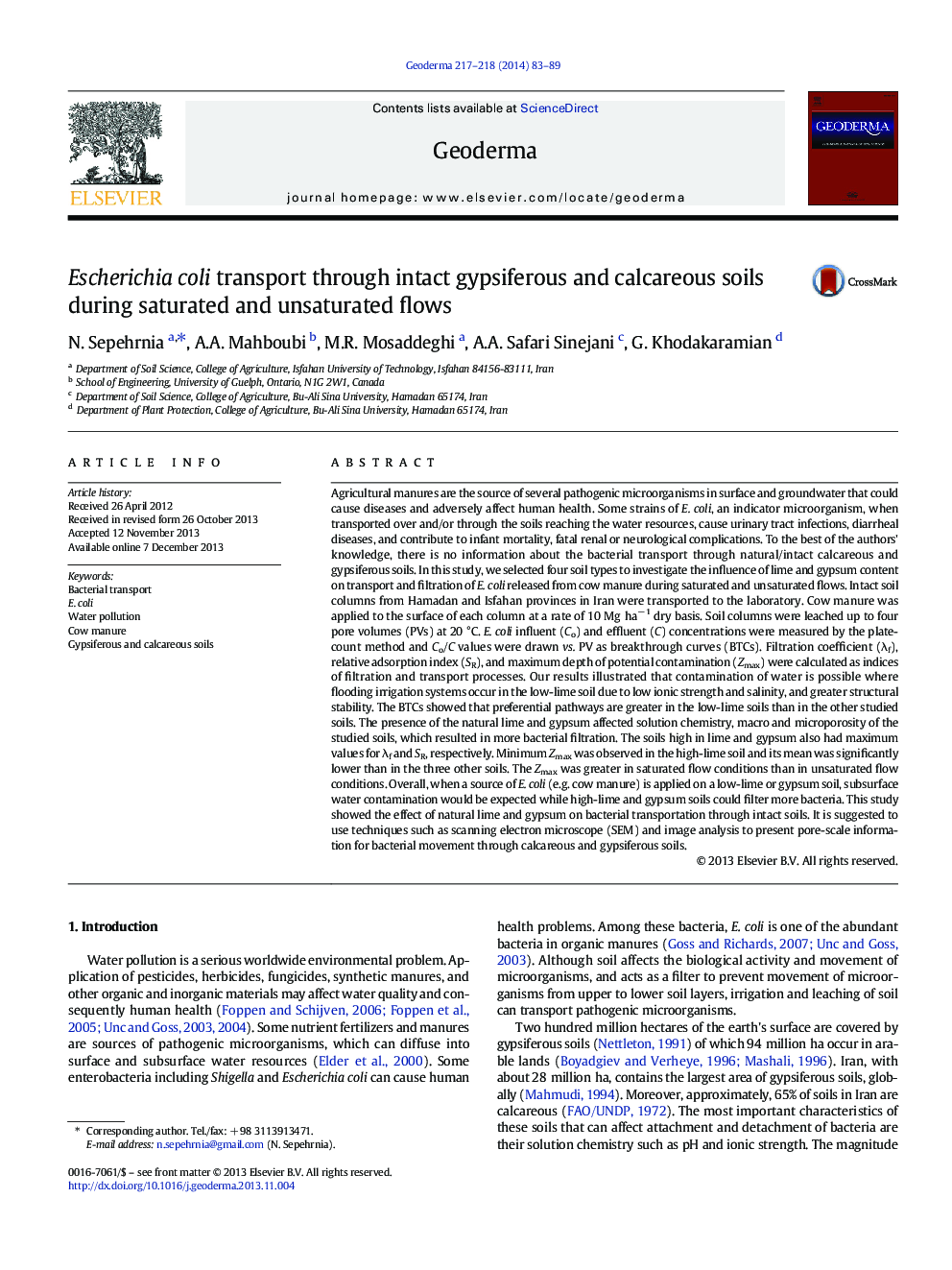| کد مقاله | کد نشریه | سال انتشار | مقاله انگلیسی | نسخه تمام متن |
|---|---|---|---|---|
| 4573416 | 1629476 | 2014 | 7 صفحه PDF | دانلود رایگان |

• E. coli transport and filtration through intact soils was investigated.
• High/low lime and gypsum soils were selected to determine how they affect E. coli transport.
• Structural stability of low lime soil facilitated E. coli movement.
• High lime and gypsum soils had maximum bacterial filtration.
• By increasing manure low lime soil has the greatest potential to pollute water.
Agricultural manures are the source of several pathogenic microorganisms in surface and groundwater that could cause diseases and adversely affect human health. Some strains of E. coli, an indicator microorganism, when transported over and/or through the soils reaching the water resources, cause urinary tract infections, diarrheal diseases, and contribute to infant mortality, fatal renal or neurological complications. To the best of the authors' knowledge, there is no information about the bacterial transport through natural/intact calcareous and gypsiferous soils. In this study, we selected four soil types to investigate the influence of lime and gypsum content on transport and filtration of E. coli released from cow manure during saturated and unsaturated flows. Intact soil columns from Hamadan and Isfahan provinces in Iran were transported to the laboratory. Cow manure was applied to the surface of each column at a rate of 10 Mg ha− 1 dry basis. Soil columns were leached up to four pore volumes (PVs) at 20 °C. E. coli influent (Co) and effluent (C) concentrations were measured by the plate-count method and Co/C values were drawn vs. PV as breakthrough curves (BTCs). Filtration coefficient (λf), relative adsorption index (SR), and maximum depth of potential contamination (Zmax) were calculated as indices of filtration and transport processes. Our results illustrated that contamination of water is possible where flooding irrigation systems occur in the low-lime soil due to low ionic strength and salinity, and greater structural stability. The BTCs showed that preferential pathways are greater in the low-lime soils than in the other studied soils. The presence of the natural lime and gypsum affected solution chemistry, macro and microporosity of the studied soils, which resulted in more bacterial filtration. The soils high in lime and gypsum also had maximum values for λf and SR, respectively. Minimum Zmax was observed in the high-lime soil and its mean was significantly lower than in the three other soils. The Zmax was greater in saturated flow conditions than in unsaturated flow conditions. Overall, when a source of E. coli (e.g. cow manure) is applied on a low-lime or gypsum soil, subsurface water contamination would be expected while high-lime and gypsum soils could filter more bacteria. This study showed the effect of natural lime and gypsum on bacterial transportation through intact soils. It is suggested to use techniques such as scanning electron microscope (SEM) and image analysis to present pore-scale information for bacterial movement through calcareous and gypsiferous soils.
Journal: Geoderma - Volumes 217–218, April 2014, Pages 83–89